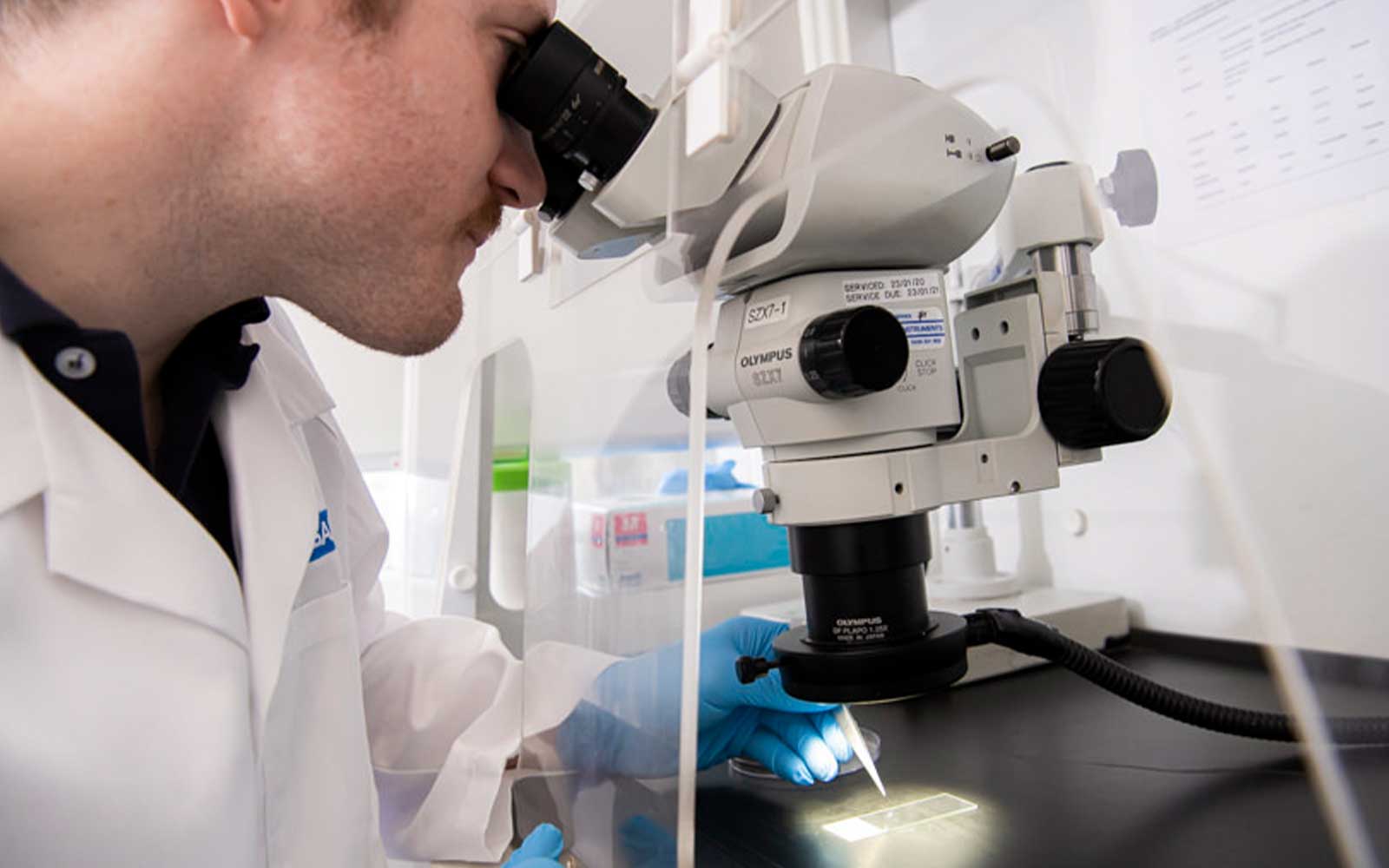Asbestos Testing: Important Steps for a Safe Living Setting
Asbestos Testing: Important Steps for a Safe Living Setting
Blog Article
The Full Process of Accredited Asbestos Checking to Make Certain Building Conformity
In the world of building monitoring and compliance, the process of certified asbestos testing stands as a vital part to guarantee the security and health of passengers. Understanding the intricate steps associated with this screening protocol is vital for building proprietors and supervisors alike. From the initial analysis to the last analysis of outcomes, each phase plays an important function in figuring out the presence of asbestos within a building. Let's explore how this careful process unfolds to ensure adherence to stringent policies and guard versus possible health hazards.
Accredited Asbestos Testing: Initial Analysis
In carrying out the first evaluation for recognized asbestos testing, a precise exam of the home's materials is important to precisely determine prospective asbestos-containing materials. Special interest is provided to products that are prone to harm or disruption, as these circumstances can release damaging asbestos fibers into the air.
Recognized asbestos assessors adhere to stringent methods established by regulative bodies to guarantee the accuracy and dependability of the testing process. By meticulously recording findings and utilizing innovative screening methods, assessors can provide building proprietors with a thorough record detailing the existence of asbestos, if any, and the recommended actions for reduction or elimination. This first assessment establishes the foundation for subsequent actions to resolve asbestos concerns and ensure the safety and compliance of the building.
Sample Collection Treatments for Asbestos Testing
Efficient sample collection procedures are important in guaranteeing precise asbestos screening results and conformity with governing standards. When gathering examples for asbestos testing, it is important to adhere to strict methods to minimize the risk of contamination and guarantee the dependability of the results.
First of all, it is very important to determine the suspected asbestos-containing materials (ACMs) and focus on tasting areas based upon aspects such as the material's problem, access, and possibility for disturbance. Asbestos Testing. Samples need to be collected from different places within the residential property to offer an extensive assessment of asbestos existence
During example collection, certified professionals need to put on suitable personal safety equipment (PPE) to safeguard against asbestos exposure. They should use tidy devices, such as non reusable gloves and plastic sheet, to avoid cross-contamination between examples. Samples need to be thoroughly collected utilizing a defined method, such as damp wiping or coring, and firmly sealed in closed containers to maintain their integrity during transportation to the research laboratory for analysis.
Laboratory Analysis Process for Asbestos Examples
Upon conclusion of the example collection procedure, the asbestos examples are carefully transferred to certified research laboratories for precise analysis. At the lab, educated Home Page service technicians take care of weblink the examples with severe like prevent any cross-contamination or sample degradation. The primary step busy evaluation process is sample preparation, where the gathered samples are thoroughly processed to remove the asbestos fibers. Asbestos Testing. This step is essential to make sure exact lead to the succeeding evaluation.

Once the evaluation is total, a comprehensive report is produced, detailing the findings and confirming whether asbestos is existing, the sort of asbestos fibers identified, and the concentration degrees. This details is important for homeowner to take the required actions to make certain conformity with asbestos policies and secure the wellness of passengers.

Coverage and Interpretation of Asbestos Test Outcomes
Accredited asbestos screening research laboratories supply detailed records that offer important understandings into the presence, type, and concentration levels of asbestos fibers discovered in samples accumulated from properties. These reports are crucial for residential property proprietors and managers to understand the danger positioned by asbestos and make informed decisions concerning its administration or removal. The records usually include information on the methods utilized for screening, the places from which examples were taken, the kind of asbestos recognized (such as chrysotile, amosite, or crocidolite), and the concentration levels of asbestos fibers detected.
Interpreting these results needs knowledge to examine the possible health dangers related to asbestos direct exposure, figure out the suitable course of action, and make certain regulatory compliance (Asbestos Testing). Depending upon the searchings for, referrals may vary additional resources from proceeded monitoring and maintenance to encapsulation or full asbestos reduction. Homeowner must thoroughly examine these reports and consult with asbestos professionals to develop a comprehensive plan for resolving any asbestos problems identified
Making Certain Building Compliance With Asbestos Regulations
To keep adherence with asbestos guidelines, property proprietors need to faithfully carry out steps to ensure conformity with relevant regulations and guidelines. As soon as asbestos is determined, property proprietors need to adhere to asbestos management plans that summary proper control, elimination, or encapsulation procedures to prevent exposure and spread of asbestos fibers.
Residential property proprietors must give asbestos understanding training to employees and residents to lessen the risk of asbestos exposure and ensure proper handling of products that may consist of asbestos. Additionally, it is essential to remain informed about any type of updates or changes in asbestos policies to readjust monitoring methods appropriately. By proactively dealing with asbestos conformity demands, home proprietors can develop a safe setting for owners and mitigate prospective legal and wellness threats related to asbestos exposure.
Final Thought
In conclusion, certified asbestos testing is a critical process for guaranteeing property conformity with regulations. The preliminary analysis, sample collection treatments, lab analysis, and analysis of outcomes are all crucial actions in this procedure. By complying with these treatments, property owners can determine and deal with any type of asbestos hazards existing, safeguarding the health and security of occupants and maintaining compliance with governing needs.
Report this page